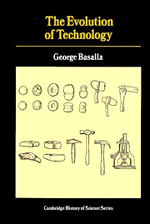Book contents
- Frontmatter
- Contents
- Preface
- I Diversity, Necessity, and Evolution
- II Continuity and Discontinuity
- III Novelty (1): Psychological and Intellectual Factors
- IV Novelty (2): Socioeconomic and Cultural Factors
- V Selection (1): Economic and Military Factors
- VI Selection (2): Social and Cultural Factors
- VII Conclusion: Evolution and Progress
- Bibliography
- Sources of Quotations
- Index
VII - Conclusion: Evolution and Progress
Published online by Cambridge University Press: 05 August 2014
- Frontmatter
- Contents
- Preface
- I Diversity, Necessity, and Evolution
- II Continuity and Discontinuity
- III Novelty (1): Psychological and Intellectual Factors
- IV Novelty (2): Socioeconomic and Cultural Factors
- V Selection (1): Economic and Military Factors
- VI Selection (2): Social and Cultural Factors
- VII Conclusion: Evolution and Progress
- Bibliography
- Sources of Quotations
- Index
Summary
Evolution
It is fitting that a book based on an evolutionary model should conclude, as it began, with reference to the work of Charles Darwin. Although Darwin never considered applying his evolutionary theory to technology, a number of Darwin's contemporaries readily drew analogies between the development of living beings and material artifacts. The earliest, and perhaps most famous, nineteenth-century figure to do so was Karl Marx, who published his Capital in 1867, eight years after the appearance of Darwin's Origin of Species. Marx's evolutionary analogy includes two stages. In the first stage technology engages humanity in a direct, active relationship with nature. Men and women use their labor to shape physical reality, thus creating the artifactual realm. Once the natural world is transformed by work, nature becomes a virtual extension of the human body. Thus, men and women working with natural objects and forces bring nature within the sphere of human life.
Having minimized the differences between the made and the living worlds, Marx moves on to the second stage of his argument and suggests that the Darwinian approach to the “history of Nature's Technology” be transferred to the “history of the productive organs of man.” He argues that evolutionary explanations should be applied to the organs that plants and animals rely upon for survival and to the technological means that humans use to sustain life.
- Type
- Chapter
- Information
- The Evolution of Technology , pp. 207 - 218Publisher: Cambridge University PressPrint publication year: 1989



